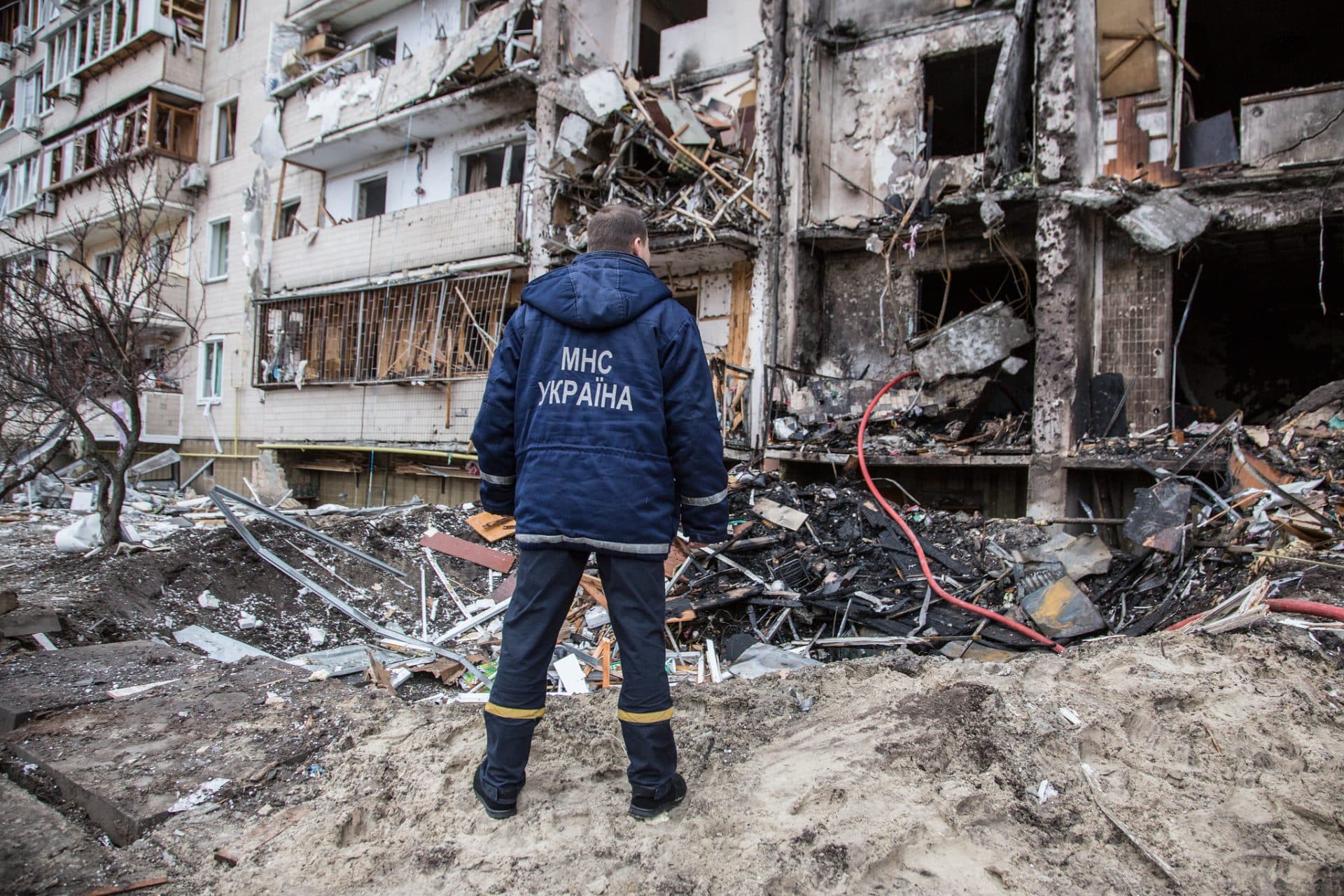Loading News Article...
We're loading the full news article for you. This includes the article content, images, author information, and related articles.
We're loading the full news article for you. This includes the article content, images, author information, and related articles.
Russian forces have intensified drone and missile attacks on Ukraine's vital railway network, critical for both military logistics and civilian transport, leading to increased casualties and disruptions across the country.

Olha Zolotova, a railway conductor, recounts the harrowing moment her train was struck by a Russian drone in Shostka, Sumy region, earlier this month. "When the Shahed [drone] hit I was covered in rubble. I was in the second car. People pulled me out," she stated from her hospital bed in Kyiv. "My eyes went dark. There was fire everywhere, everything was burning, my hair caught fire a little. I was trapped." Zolotova sustained severe hip and leg injuries, necessitating surgery and a metal plate insertion.
Her experience highlights Russia's escalating campaign against Ukraine's extensive railway system, a critical artery for the nation's war effort and a powerful symbol of its resilience. These attacks, primarily involving drones, have surged since mid-summer, with Ukrainian officials reporting a significant increase in frequency.
Ukraine's railway network, spanning approximately 20,000 to 22,000 kilometres, is one of the largest in Europe and the 13th largest globally. It is a state-owned monopoly, Ukrzaliznytsia (Ukrainian Railways), which handles the vast majority of the country's freight and a significant portion of its passenger transport. Since the full-scale Russian invasion in February 2022, the railways have become indispensable for civilian and military logistics, especially given the challenges of road transport and the halt of civilian air travel.
The current intensification of attacks appears to be a strategic move by Russia to disrupt military logistics, particularly amid new arms delivery announcements from Western partners. Oleksandr Pertsovskyi, CEO of Ukrainian Railways, noted that Russia is now employing more precise Shahed drones to target individual locomotives, aiming to sow unrest in border regions by severing rail connections.
The Ukrainian government, through Ukrzaliznytsia, has undertaken considerable efforts to repair and transform the network. This includes plans to integrate with the European Union's rail network by constructing or renewing standard-gauge border crossings, as Ukraine primarily uses a broader 1,520 mm gauge compared to Europe's 1,435 mm standard gauge.
Railway workers like Olha Zolotova are on the front lines of these attacks, facing direct threats to their lives and well-being. Since the start of the full-scale invasion, 221 railway workers have been injured, and 37 have been killed in the line of duty. Despite the dangers, Ukrainian railway managers have prided themselves on their ability to conduct speedy repairs and maintain operations.
The attacks have also led to civilian casualties. A double-tap strike on a passenger train in the Shostka community on Thursday, October 4, 2025, killed one person and injured at least nine others, including three children. In a separate incident on Friday, July 14, 2025, a combined air strike on Shostka by drones and guided aerial bombs resulted in two fatalities and several injuries, including a 7-year-old boy.
The increased tempo and precision of Russian drone attacks pose a serious threat to Ukraine's ability to maintain its critical transport infrastructure. These strikes aim to complicate the transport of passengers and cargo, disrupt stable transport operations, and exert additional pressure on the Ukrainian population and economy. Delays in passenger services, ranging from one hour to over eight hours, have become more frequent. The attacks also target not only railway lines but also passenger stations, locomotive depots, and power substations.
While Ukrainian officials attribute the surge in attacks to Russia's intent to disrupt military aid and logistics, the full extent of the impact on Ukraine's military supply lines remains a closely guarded secret. The exact routes and movements of medical evacuation trains, for instance, are not publicly disclosed for security reasons.
Since mid-summer 2025, the rate of Russian attacks on railways has more than doubled, from roughly one per week to two or three per week. Ukrainian repair crews are working diligently to match the pace of Russian strikes, often restoring infrastructure within hours.
The ongoing "battle for the railways" will likely continue to be a critical aspect of the conflict. Observers will be watching for Ukraine's ability to adapt its railway infrastructure and logistics in the face of these intensified attacks, as well as any further advancements in Russian drone technology and tactics. The efforts to integrate Ukraine's railway system with European standard-gauge networks will also be a key development to monitor for its long-term implications on trade and connectivity.
Keep the conversation in one place—threads here stay linked to the story and in the forums.
Other hot threads
E-sports and Gaming Community in Kenya
Active 6 months ago
Popular Recreational Activities Across Counties
Active 6 months ago
The Role of Technology in Modern Agriculture (AgriTech)
Active 6 months ago
Investing in Youth Sports Development Programs
Active 6 months ago